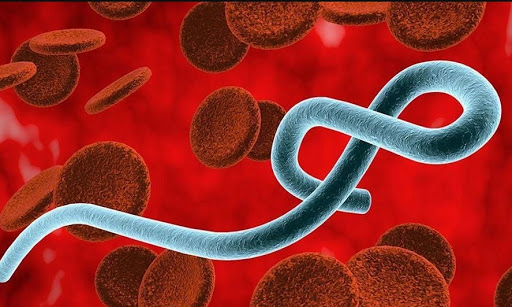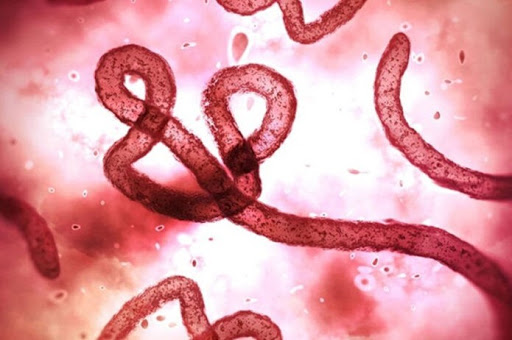The disease caused by the Ebola virus returned to hot news in early June 2020. One of the Provinces in the Country of the Congo there are some of its citizens affected by this Ebola virus. Precisely in the area of Wangata, Mbandaka, Equater Province of the Congo.According to the World Health Organization (WHO) at least today, Tuesday (02/06/2020) there are at least 6 people affected by this virus. In fact there have been 4 people who died.For readers who do not know what an Ebola virus is, the following I describe, may be useful.table of contents
- What is Ebola Virus?
- History of the Spread of the Ebola Virus
- High Risk of Ebola Disease
- Symptoms of the Ebola Virus
- Ebola diagnosis
- Ebola Disease Treatment Process
- Complications of the Ebola Virus
- Ebola Prevention
- Picture of Ebola Virus
What is Ebola Virus?
The Ebola virus is a disease caused by a virus called Ebola. This virus is very dangerous if not handled properly. Ebola virus is a deadly disease that can cause diarrhea, fever and even bleeding in the body of the sufferer. Only a few sufferers of Ebola can recover from this dangerous virus.This virus belongs to the Filoviriade family. In the Filovirade family there are three types of virus groups, including Cuevavirus, Marburgvirus and Ebolavirus. The Ebola virus was first discovered in 1976 in mainland Africa. At first this virus breed in animals, then it can be transmitted to humans through the blood of animals that have been contaminated by the Ebola virus.
History of the Spread of the Ebola Virus
As I stated above, the Ebola virus was discovered around 1976 in the African continent. Ebola itself is a disease that has a high mortality rate of 50 percent. Until now there has not been a vaccine that can truly cure sufferers from the Ebola virus attack.The initial suspicion that the Ebola virus attacks humans is derived from human interactions with animals. It is thought that these animals can breed in animals such as monkeys, chimpanzees, gorillas and bats. The transmission process is almost the same as covid-19, which is through a liquid that can survive on the surface. So if there is contact with patients with Ebola disease, it is suspected that other people will experience this virus attack as well.
- How to lose weight fast
- How to Get Rid of Acne Scars Permanently
- 2 Quick Steps to Shape a Six Pack Body
High Risk of Ebola Disease
To reduce the high risk of the spread of the Ebola virus, it is recommended that you:
- Do Not Travel To Affected Areas of Ebola. In 2020 you should first leave the schedule to travel to mainland Africa, especially the country of the Congo.
- Research with Animal Experiments . The Ebola virus is at high risk for a researcher who often conducts experiments using animals. Especially animals originating from mainland Africa.
- Health Officer . Almost the same as the Covid-19 virus, medical personnel are also very at high risk when overcoming patients who have Ebola virus disease.
- Family. Despite independent isolation for ebola patients, family members remain at high risk of being contaminated by the Ebola virus.
- Funeral Officer. If dead, then other high-risk people are officers who take care of the body and officers who bury Ebola virus patients who died.
Symptoms of the Ebola Virus
For initial symptoms, this virus looks like any other ordinary disease, it doesn’t even look dangerous. Usually in the form, fever, colds, headaches, muscle and joint pain. These initial symptoms usually occur for 2-5 days. After about 5-10 days, there will usually be more severe symptoms including:
- Shivering
- Severe headache
- Red eye
- Pain in the throat
- Skin rashes appear
- Chest pain
- Ulcer
- Nausea
- Throw up
- Diarrhea accompanied by blood
- Blood through the mouth, ears, nose and eyes
- Instant weight loss.
Ebola diagnosis
Until now no one really knows that someone affected by the Ebola virus can be seen with the naked eye. Because the initial symptoms of Ebola are almost exactly the same as malaria, flu, typhus and even co-19. One way to find out if someone has an Ebola virus or not is to use a blood test. The blood test aims to see how much antibodies a person has to fight this virus.
Ebola Disease Treatment Process
Almost the same as the Covid-19 virus, until now there is no vaccine or drug that can really destroy Ebola. Until now, medics have given medicines to increase the immune system of Ebola sufferers. The goal is that the immune system is able to fight this virus. Here are some steps for handling Ebola positive patients:
- Independent isolation exclusively at the hospital
- Giving intravenous fluids to avoid dehydration
- Providing oxygen to maintain the flow of oxygen in the body
- Blood transfusion if the patient is bleeding
Complications of the Ebola Virus
During the treatment period there are usually several complications that arise that are felt by patients with Ebola, including:
- Having hair loss
- Liver failure
- Jaundice
- Impaired vision
- Nerve Disorders
- Infection of the testicles
- Excessive fatigue
- Dead
Ebola Prevention
Almost the same as covid-19, then there are some steps you must take if you do not want to be exposed to the ebola virus. Although this virus is minimal found in Indonesia. One of them is implementing a clean lifestyle, including the following.
- Avoid direct contact with humans, animals and others.
- Use a mask
- Avoid touching objects, especially objects in public places.
- Avoid the crowd
- Avoid areas affected by Ebola
- Wash your hands frequently using either handsanitizer or hand washing soap.
Picture of Ebola Virus
Following is some insight into the enlarged Ebola virus.
The process of spreading this virus is very fast and deadly, so if you find or experience some of the symptoms that have been mentioned above, you are required to immediately consult with your nearest doctor.





Reblogged this on Stimulife.blog.